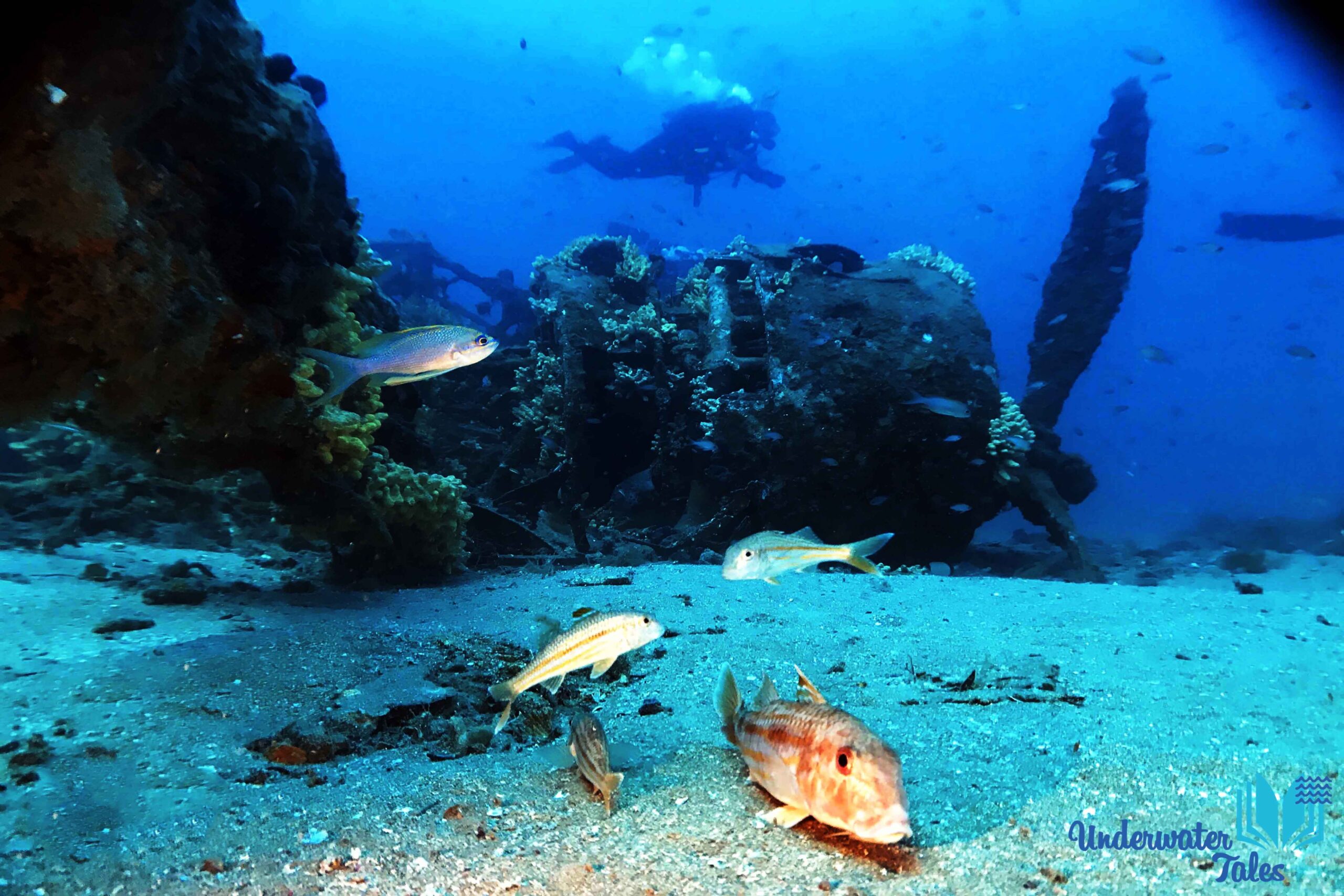The dive on one of the best preserved aircraft wrecks in the entire Mediterranean Sea, on the Riviera di Ponente of Liguria, in front of Santo Stefano al Mare, between Sanremo and Imperia. Ideal for divers qualified for deep and technical diving.
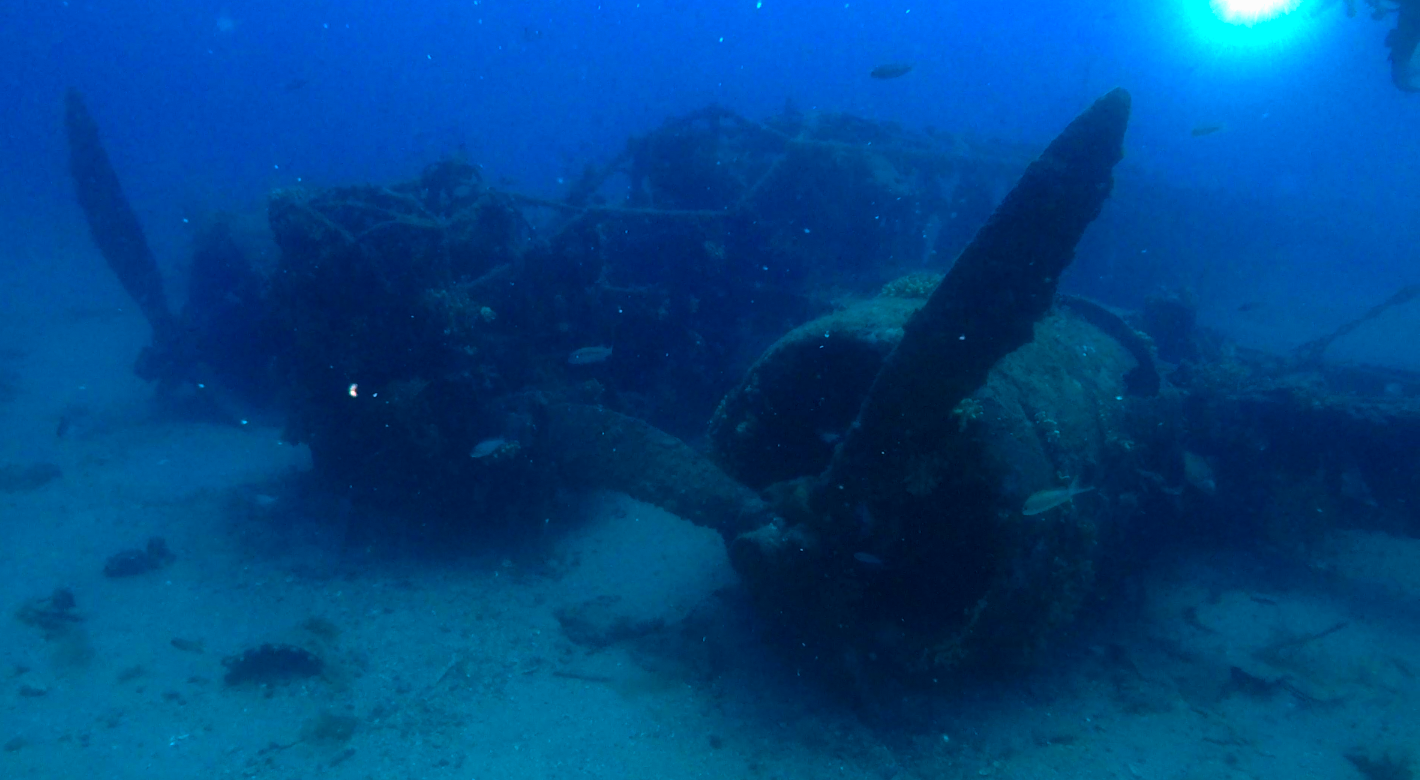
A six-ton ”stork”, made of steel and aluminum, with the fuselage still intact and the machine gun with the bullets still in the barrel, lies 47 meters deep, on the sand, in perfect trim, ready to be scanned underwater. It is the underwater wreck of the BR 20 Cicogna, a medium twin-engine bomber, produced by FIAT Aviazione in the 1930s and remained in service until the end of the Second World War.
The term BR meant Bomber Rosatelli, from the surname of the engineer who had designed it. It was just over 16 meters long, with a wingspan of nearly 22 meters and could reach a maximum speed of almost 400 kilometers per hour with a range of three thousand kilometers.

Taking off a few hours earlier from the Cascina Vaga field, in Pavia, to be sent to bomb the naval base of Toulon, in France, the BR 20 and its crew never imagined that this would be the last time they would have flown over the sky of Santo Stefano al Mare.
The crews of the forty-third assault flock immediately sensed that it was not the ideal day to take off, noting the adverse weather conditions. But the order was peremptory!

Flock of BR20s in flight
the first to take off, on that morning of June 13, 1940, were then the fighters then followed by the bombers. The Italian fighters, after having fought, had to return. The MM21505 bomber, under the command of Lieutenant Catalano, arrived late at the target and without the protection of the fighters that had now gone away, was hit several times, ending up out of action. Unable to return to reach the base, with only one malfunctioning engine, the entire crew decided to attempt a makeshift landing, once they reached the stretch of sea in front of Santo Stefano al Mare.
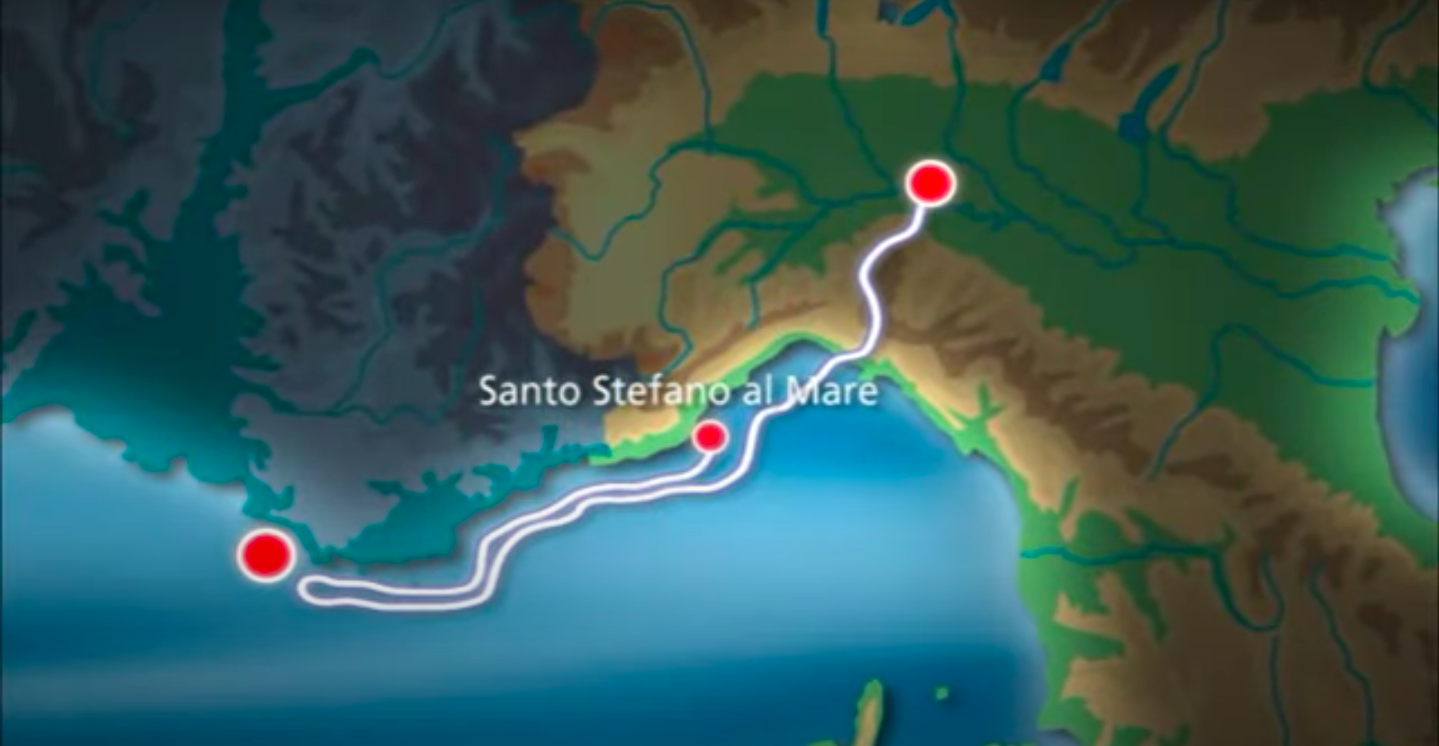
The route of the BR20 of Santo Stefano
It sank almost immediately, dragging with it the gunsmith Tommasi Ferrari, the radio operator Salvatore Gaeta and the pilot lieutenant Simone Catalano. The second pilot, Marshal Ottavio Aliani, and the first motorist aviator Farris were the only survivors and were collected after two hours in the water by the boats on the coast that came out to help.

The BR20 of Santo Stefano
Diving on the wreck of the BR 20 of Santo Stefano al Mare has always been on my personal wish list; ever since I started going underwater, with my more experienced dive buddies from the Valmessa Sub Diving Club who told me they had been there. I was thinking of the difficulty of going down to a depth of fifty meters, of how much experience I would have to accumulate before trying. I saw it photographed, leaning on the sand, on display on the wall above the counter of Bari Sub, the Turin shop where I supplied myself.

The BR20 on the bottom with divers to explore it
There has never been an opportunity in recent years. But I never stopped thinking about it. Not even when I dived to tell underwater stories of other plane wrecks.
The time has finally come! End of August 2020, four days of diving with my friend Davide Mottola, owner of the Nautilus diving center, in Marina degli Aregai.
The sun shines in the blue sky of the Riviera di Ponente in the morning of August 29th. I got up early, had breakfast and started packing my photographic equipment. I got in the car and in a few minutes I was at the diving center.
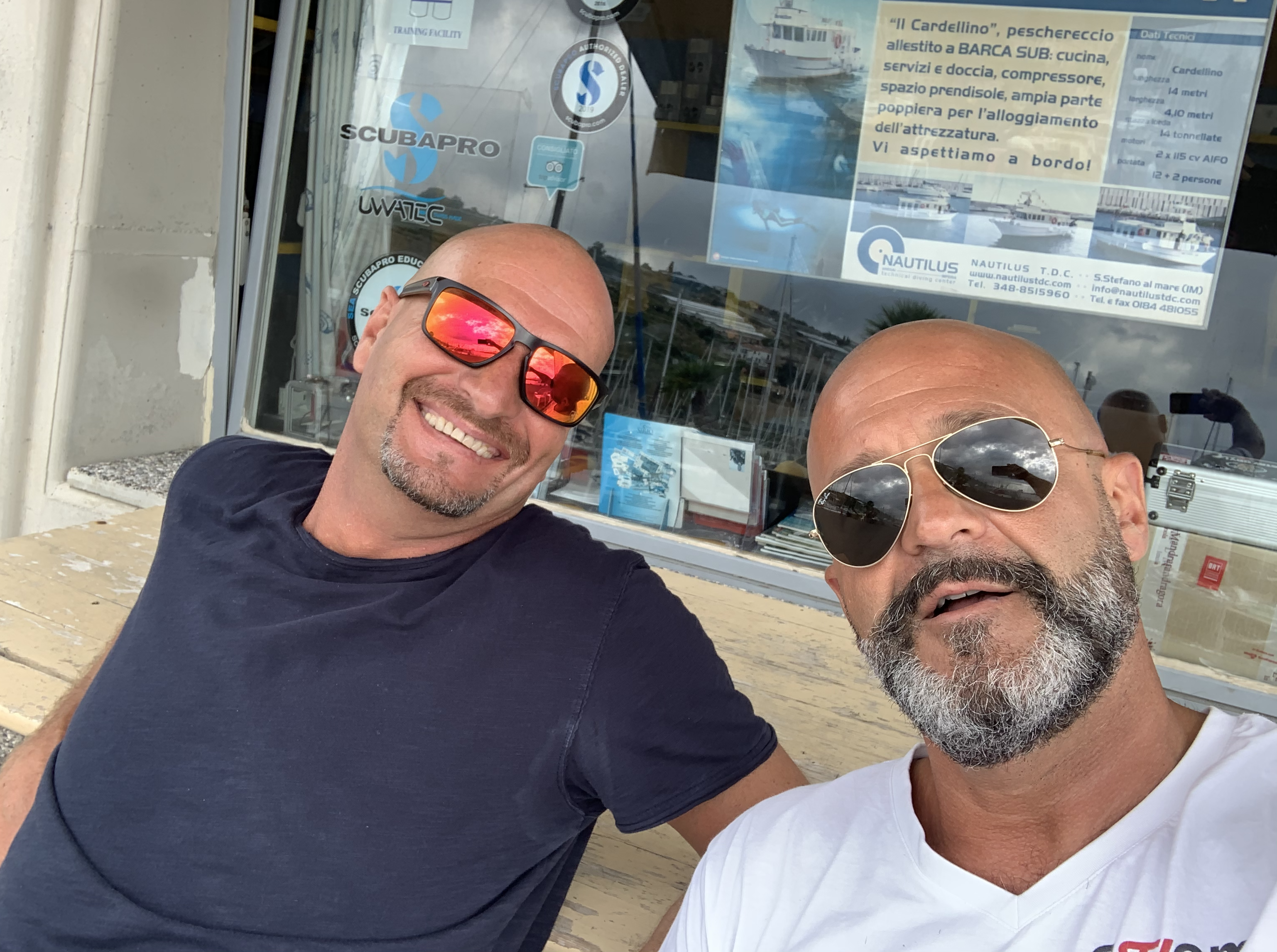
Together with Yme Carsana at the Nautilus diving center
The sea is calm and gives us relaxation and tranquility on the way to the dive site. After completing the pre-dive checks of my rEvo, I enter the water ready for the underwater descent.

My rebreather ready for diving
The slight current that often comes from the Levant allows the water to maintain a good visibility and even before reaching the bottom the wreck stands out perfectly.
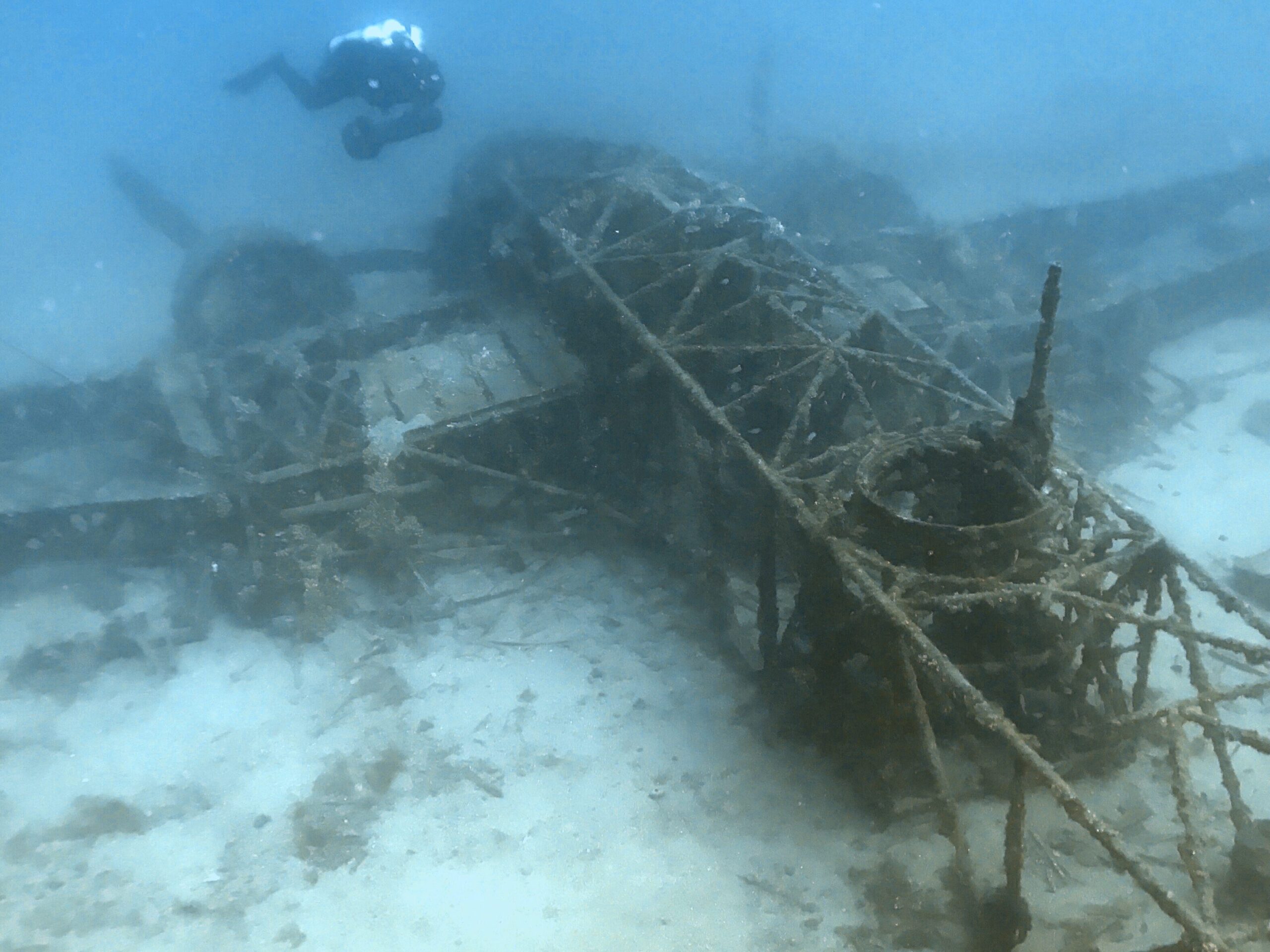
The structure of the BR20 that appears going down deep
Structurally it has remained completely intact even if little is left of the original coating, aluminum sheets and canvas. The first point of interest on which I dwell is the engine, in particular I carefully observe the three-blade propeller. Behind it you can still see the first row of cylinders arranged in a radial pattern around the axis of the propeller itself. They currently house a couple of flamboyant rockfish. The impact with the water destroyed the cover of the control cabin, crumpling it. Both the pilots’ seats and the control levers are perfectly distinguishable. Wonderful yellow sponges encrusted the front, replacing the original aircraft cover.
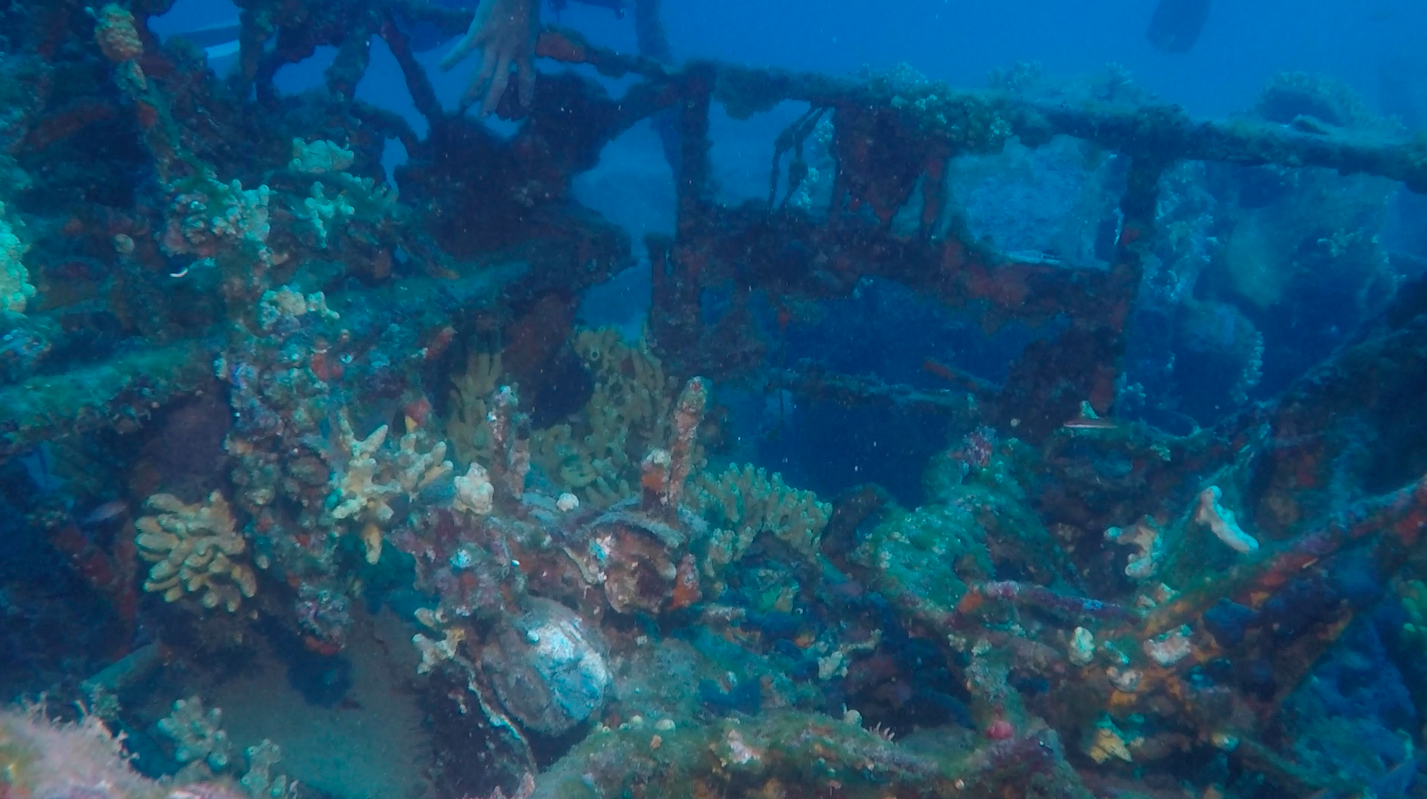
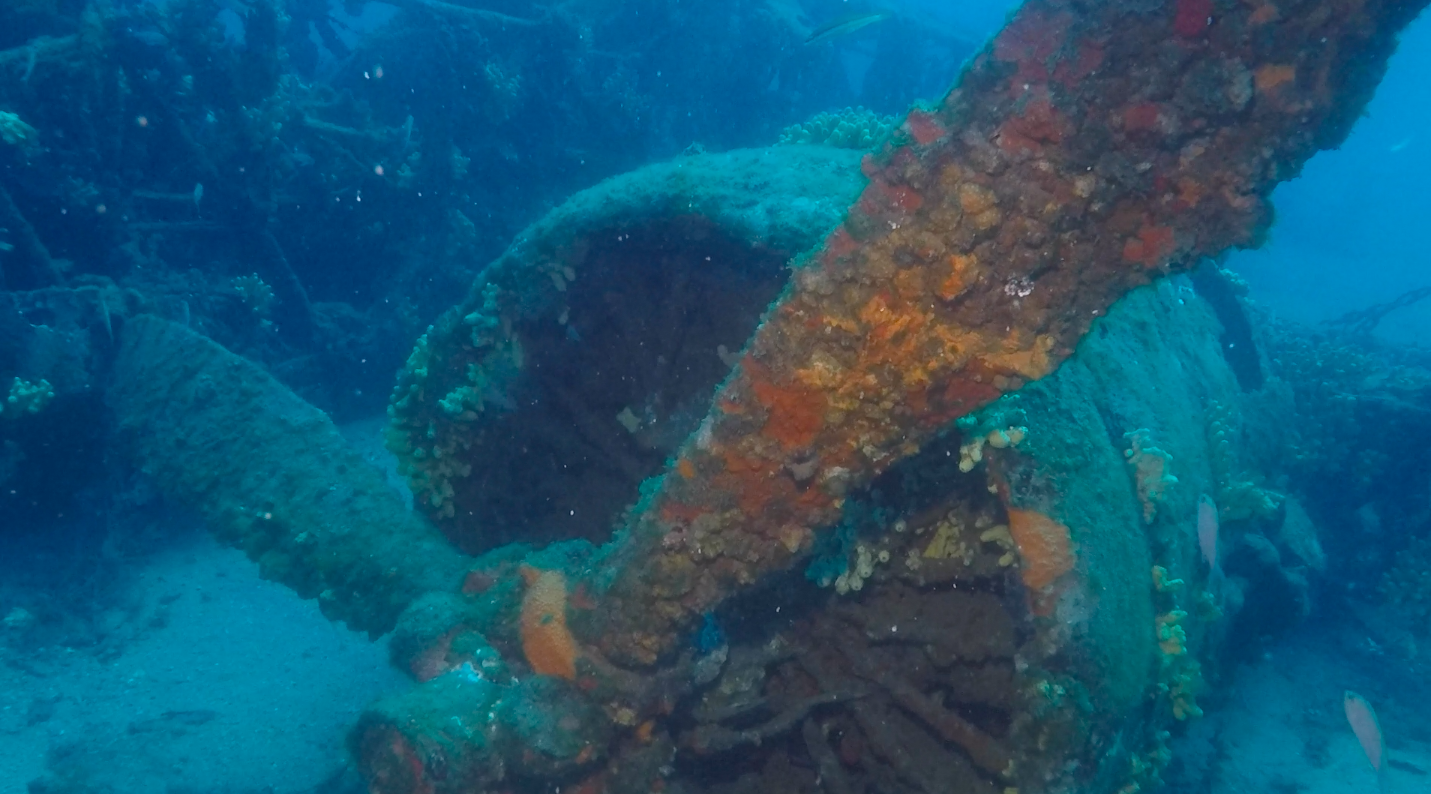
But the entire underwater wreck of the BR 20 is a hotbed of spectacular encounters for lovers of marine biology. Some curious groupers hide under the long wings while some lobsters peek out from the various holes between the sheets.

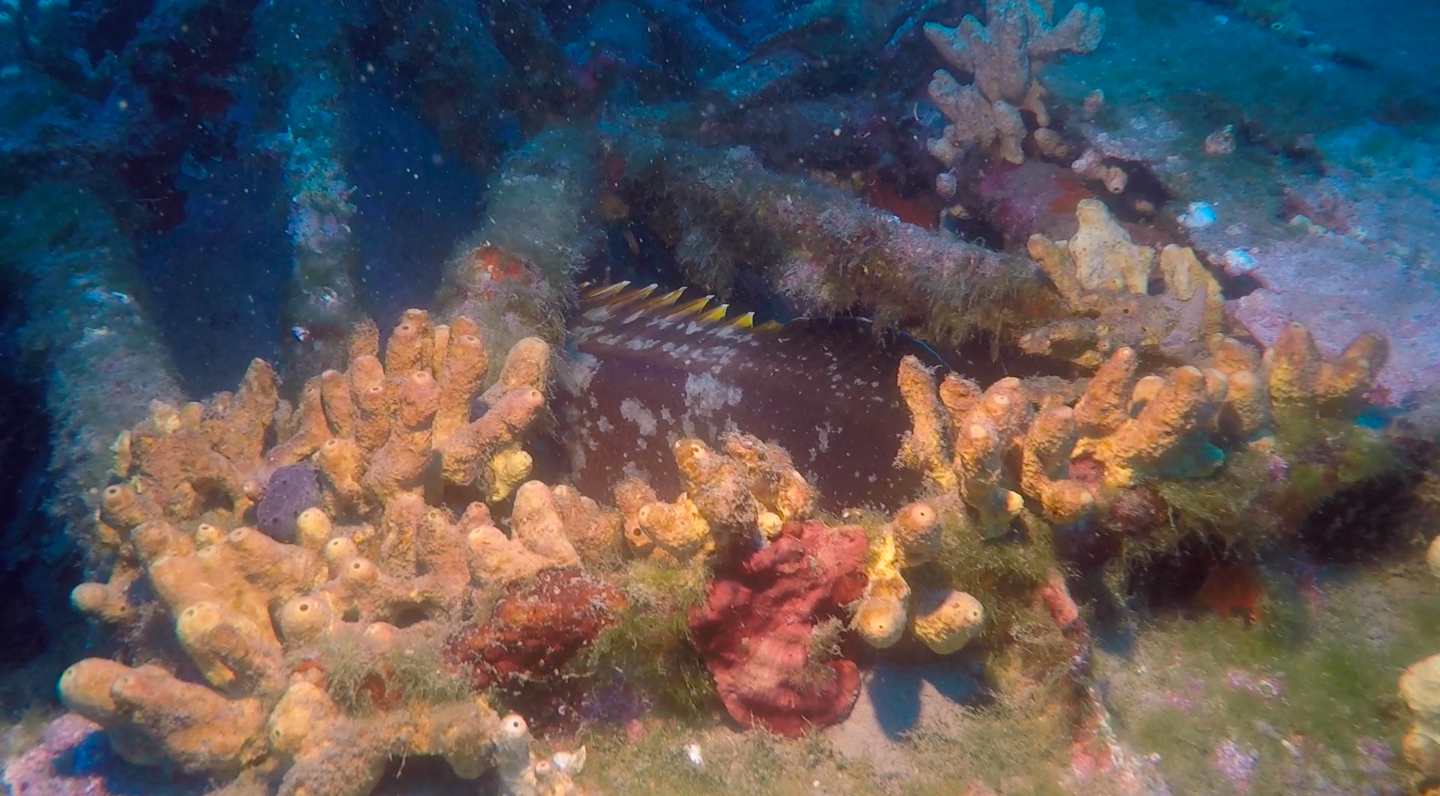
I continued my dive flying over the fuselage until I crossed the only still visible evidence of the on-board armament: the dorsal machine gun housed in a revolving turret, with the barrel facing the sky and in the compartment below the cartridge belt. They still give a proud and dignified appearance to this racing car that has fallen asleep on the bottom of the sea.

My dive buddies went back. The beams of the underwater torches and the flashes of the cameras vanished. I remained alone for a few minutes, in the company of this plane, at a depth of 47 meters. I thought back to previous years, to the fear I felt in thinking of going down there. That day below I felt free, happy to float in the water. In silence, suspended in the blue with the BR 20 of Santo Stefano al Mare in front of me.
Click here if you want to dive with Nautilus TDC in Marina degli Aregai, Imperia
Click here if you want information for the rebreather course with Yme Carsana


